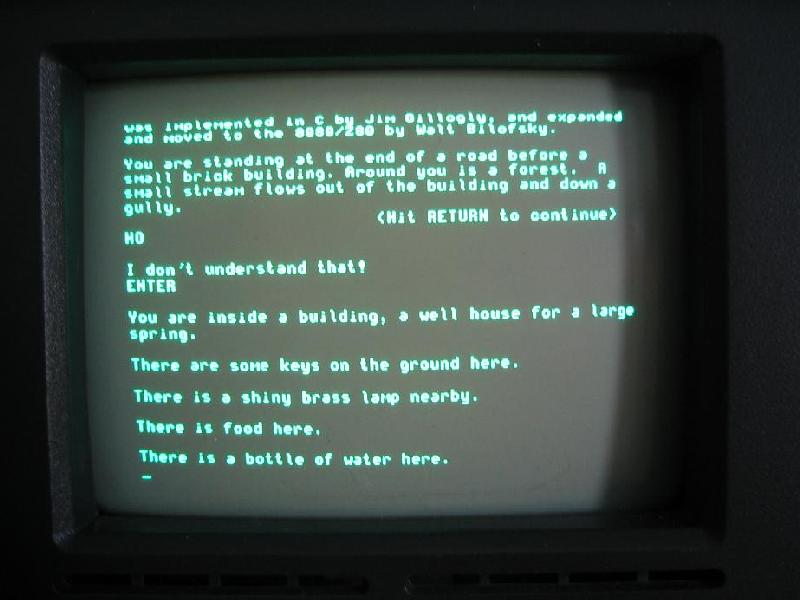|
The Space Bar
''The Space Bar'' is a 1997 graphic adventure game developed by Boffo Games and published by Rocket Science Games and SegaSoft. A comic science fiction story, it follows detective Alias Node as he searches for a shapeshifting killer inside The Thirsty Tentacle, a fantastical bar on the planet Armpit VI. The player assumes the role of Alias and uses his Empathy Telepathy power to live out the memories of eight of the bar's patrons, including an immobile plant, an insect with compound eyes and a blind alien who navigates by sound. Gameplay is nonlinear and under a time limit: the player may solve puzzles and gather clues in any order, but must win before the killer escapes the bar. ''The Space Bar'' was conceived and directed by Steve Meretzky, a former Infocom employee who had previously created titles such as ''The Hitchhiker's Guide to the Galaxy''. Meretzky hoped to design a graphic adventure in the spirit of text-based interactive fiction games, and to recapture that genre's ... [...More Info...] [...Related Items...] OR: [Wikipedia] [Google] [Baidu] |
Boffo Games
Boffo Games was a video game developer founded in 1994 by Steve Meretzky, Mike Dornbrook, and Leo DaCosta. The logo was designed by Gayle Syska, formerly of Infocom. Boffo produced two games, ''Hodj 'n' Podj'' and ''The Space Bar'', before closing its doors in 1997. ''Hodj 'n' Podj'' was originally designed for Media Vision but it divested all of its multimedia interests following a securities-fraud scandal and the title was purchased by Virgin Interactive. ''The Space Bar'' was originally to be published by Rocket Science Games (RSG) but SegaSoft bought out RSG and became the game's publisher. History In late 1993, designer Steve Meretzky began to consider founding an independent game development studio with his friends Mike Dornbrook and Leo DaCosta. The three of them had gone to the Massachusetts Institute of Technology together, and Meretzky had worked with Dornbrook at Infocom and with DaCosta during the 1990s. Following the 1989 closure of Infocom, Meretzky worked on a cont ... [...More Info...] [...Related Items...] OR: [Wikipedia] [Google] [Baidu] |
The Hitchhiker's Guide To The Galaxy (video Game)
''The Hitchhiker's Guide to the Galaxy'' is an interactive fiction video game based on the comedic science fiction series The Hitchhiker's Guide to the Galaxy, of the same name. It was designed by series creator Douglas Adams and Infocom's Steve Meretzky, and it was first released in 1984 for the Apple II, Macintosh, Commodore 64, CP/M, MS-DOS, Amiga, Atari 8-bit family, and Atari ST. It is Infocom's fourteenth game. Plot The game loosely mirrors a portion of the series' plot, representing most of the events in The Hitchhiker's Guide to the Galaxy (novel), the first book. Arthur Dent wakes up one day to find his house about to be destroyed by a construction crew to make way for a new bypass. His friend Ford Prefect (character), Ford Prefect, who is secretly an extraterrestrials in fiction, extraterrestrial, helps to calm Arthur down and hitches them a ride on one of the ships in the approaching Vogon constructor fleet, moments before the fleet destroys the Earth to make way for ... [...More Info...] [...Related Items...] OR: [Wikipedia] [Google] [Baidu] |
Non-player Characters
A non-player character (NPC), or non-playable character, is any character in a game that is not controlled by a player. The term originated in traditional tabletop role-playing games where it applies to characters controlled by the gamemaster or referee rather than by another player. In video games, this usually means a character controlled by the computer (instead of a player) that has a predetermined set of behaviors that potentially will impact gameplay, but will not necessarily be the product of true artificial intelligence. Role-playing games In a traditional tabletop role-playing game such as ''Dungeons & Dragons'', an NPC is a character portrayed by the gamemaster (GM). While the player characters (PCs) form the narrative's protagonists, non-player characters can be thought of as the "supporting cast" or "extras" of a roleplaying narrative. Non-player characters populate the fictional world of the game, and can fill any role not occupied by a player character. Non-player ... [...More Info...] [...Related Items...] OR: [Wikipedia] [Google] [Baidu] |
Free Look
Free look (also known as mouselook) describes the ability to move a mouse (computing), mouse, joystick, analogue stick, or D-pad to rotate the player character's view in video games. It is almost always used for 3D game engines, and has been included on role-playing video games, real-time strategy games, third-person shooters, first-person shooters, racing games, and flight simulators. Free look is nearly universal in modern games, but it was one of the significant technical breakthroughs of mid-1990s first person (video games), first-person perspective games. Many modern console games dedicate one of the several analogue sticks on the gamepad entirely to rotating the view, where as some older console games, when gamepads usually had fewer or only a single D-pad or analogue stick, had a feature where the single D-pad or analogue stick would move the view instead of the character whilst the player held down another button at the same time, often labelled in game as the "look button ... [...More Info...] [...Related Items...] OR: [Wikipedia] [Google] [Baidu] |
